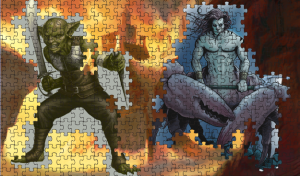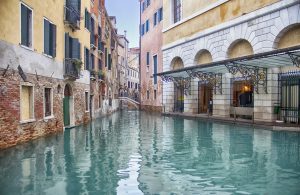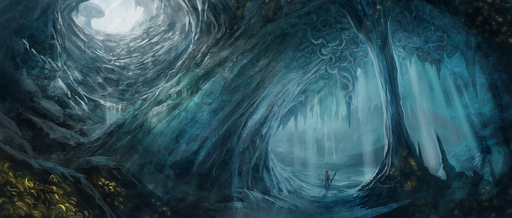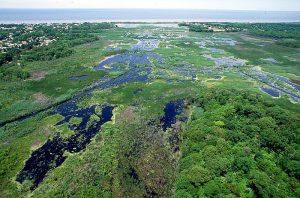![]()
What we write is system and setting independent. While this means that things need to be adapted to your games, that is true of any published material – you know your games, your world, and your players better than anyone else after all. On the plus side this means what we write is applicable to a wider range of people and we are not tied to another company’s release schedule or edition changes.
There is one noteworthy issue in system-independent material, and that is the question of rules. If we were to publish rules for a gyik as, say, a level 8 monster in Pathfinder it may be useful for a few levels either side, but the range would be limited meaning that you would have to adapt it if your players are not in that range when you want to send them into the Sivatag Desert – and it would be almost completely useless to players of Savage Worlds. So how do you turn that gyik into a monster for your players to fight, or the giant sundew from Samudtratat Beach into an interesting terrain feature?
Well of course that depends on your game system. Most systems nowadays have advice on how to create the stats for something, and (unless you’re playing high level D&D 3.5) they’re generally pretty quick, if relatively basic. For something like Fate Accelerated (or even more so Risus) you can often just pull a few key lines out of the text and chuck a few numbers which feel right at the page and it’s sorted. Something like D&D or Gurps is more involved, but again between the guidance for creating monsters and NPCs in the book and the ideas it can certainly be done. If you find yourself struggling to create something within the guidelines given the simplest solution is often to look in the “Monster Manual” “Creature Compendium” “Baddy Book” or whatever else your chosen game calls its enemies section – look for creatures with similar abilities and just tweak them and change the description (and damage types if applicable).
When reading a description of a person, creature, plant, or anything else, look for the key parts of the description which would involve mechanics. For example the various characters in Red Lock Bay include descriptions of what they do best and what they are known for, as well as their history. That information should inform their key skill levels. The twins Daniel and Alan Herbert are skilled chefs, but just as much they are excellent showmen. It is fair to suggest they would be highly dexterous and charismatic (despite their appearance – many games unhelpfully conflate physical appearance and social ability) – many games have a stat called dexterity and another called charisma, but those which don’t will have analogues (such as agility, or charm). They also need high skills in cookery, butchery, fishing and whatever other related skills are in your game. As they are generally well respected it would be good to give them some degree of contacts, allies, or similar if your game uses them.
Ultimately, I believe, the rules should get out of the way and allow a good story to be told. Some things can be fudged , or things adapted into other things – for example Red Lock Bay’s Seaborne Ponies could use any regular pony stats with the addition of a swim skill (unless you were to take the suggestion of making them kelpies, in which case they are something altogether more complex). Sometimes, however, the mechanics are a good way to tell part of the story and there we have called out rules ideas – the Royal Panoply of Annem Ka is the only place I have felt a real need to do this. There I have made suggestions of what the various items and artifacts might do as they are awakened as their process of awakening and growing power is a key part of the story. Even here, though I have left the specifics to you – should the bonus to leadership skills that the Crown of Annem Ka provides be +2 or +5? Or should it grant proficiency in the skill?
These questions, and others, are ones that only you can answer because they depend on your world, your stories, what will help the players shine equally, and what you and your players will enjoy.
After all, is enjoyment not the entire reason we are here?







![By Thomas Quine (Reed Islands of Lake Titicaca) [CC BY 2.0 (http://creativecommons.org/licenses/by/2.0)], via Wikimedia Commons](http://blog.artemisgames.co.uk/wp-content/uploads/2017/08/Reed_Islands_of_Lake_Titicaca-300x225.jpg)


